
“National Archaeological Discoveries” is the theme for EUROPA stamps this year. Here we have some fine examples:
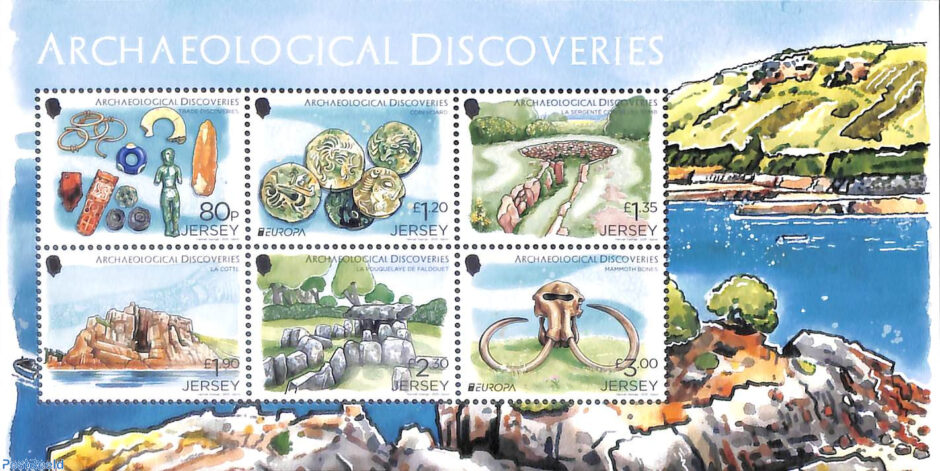
The British Channel Island of Jersey has this stamp sheet. Illustrations by British artist Hannah George, who used a combination of watercolour, ink and digital processing to create the beautiful artwork for this issue. Despite Jersey’s geographical size, it’s location within the Channel and close connection to France during the Ice Age makes it a hidden treasure chest filled with extraordinary archaeological finds, some of which are featured within the issue.
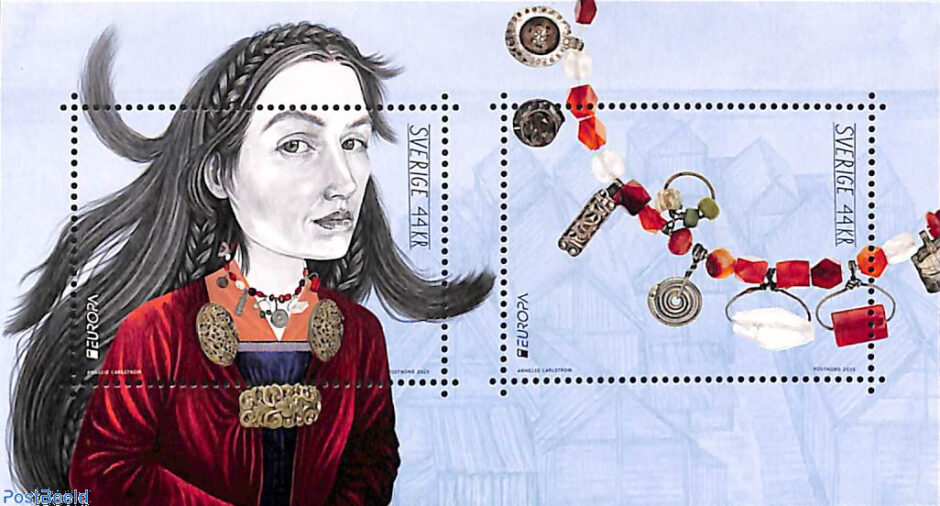
Sweden release its EUROPA stamp featuring a “Protective Necklace” discovered in a Viking burial site in Birka, on the island of Björkö in Lake Mälaren. The stamp depicts a necklace with charms, rock crystals, and carnelians, highlighting the Vikings’ long-distance trade.
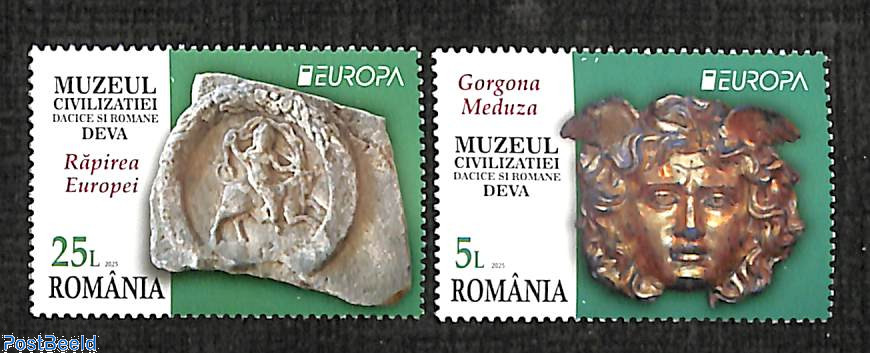
These stamps from Romania feature two unique artifacts discovered during archaeological excavations at Ulpia Traiana Sarmizegetusa and Vețel: a gilded bronze applique of Medusa the Gorgon and an image of The Abduction of Europa by Zeus.
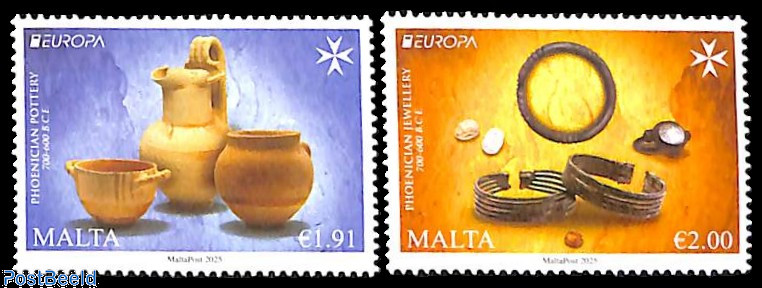
Malta’s EUROPA issue shows artifacts extracted from Phoenician tombs recently discovered at Għajn Klieb, an archaeological site in Rabat, Malta.
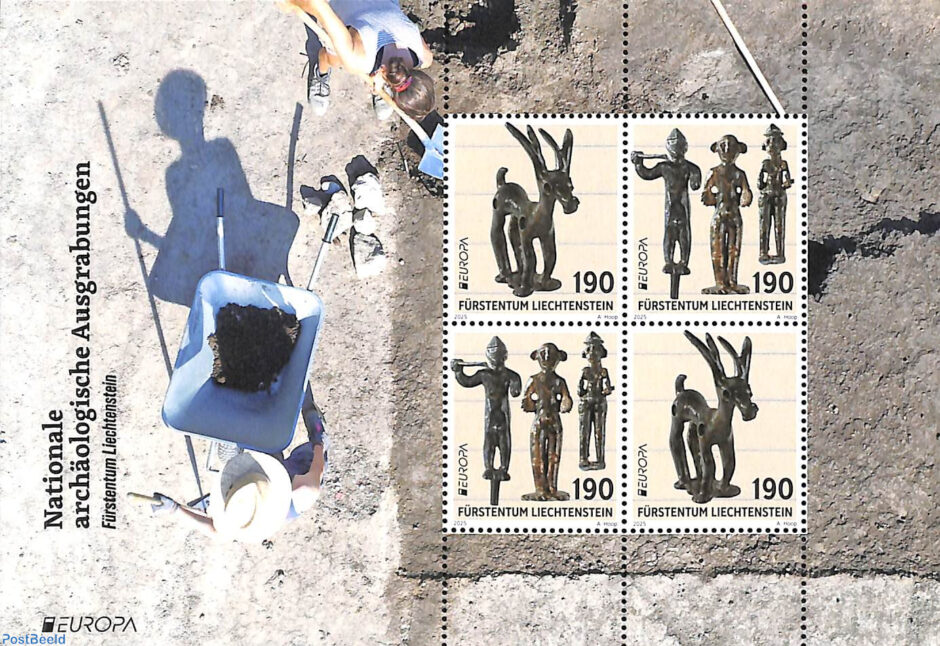
Liechtenstein’s stamps depict four of ten votive figures (small statues or figurines offered to deities, often in temples or sacred spaces, as a form of prayer, dedication, or gratitude) found on the Gutenberg castle hill in Balzers, dating back to the Late Iron Age. The background photograph showing people working at the excavation site.
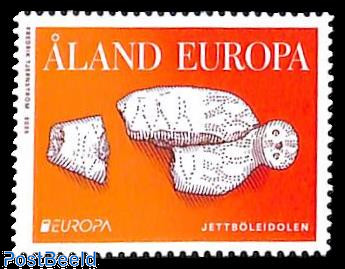
The Åland Islands issued a Europa stamp celebrating the discovery of the Jettböle Stone Age settlement. This settlement, discovered in 1906, significantly impacted the understanding of Åland’s prehistoric past. The stamp features the Jettböle idol, a symbol of this Stone Age site.
![]()
